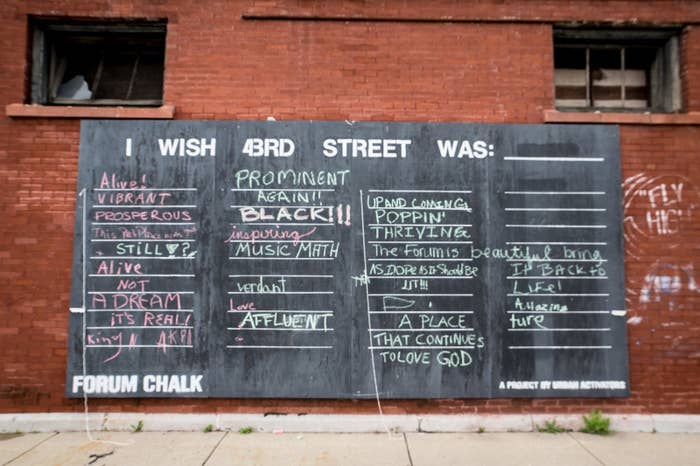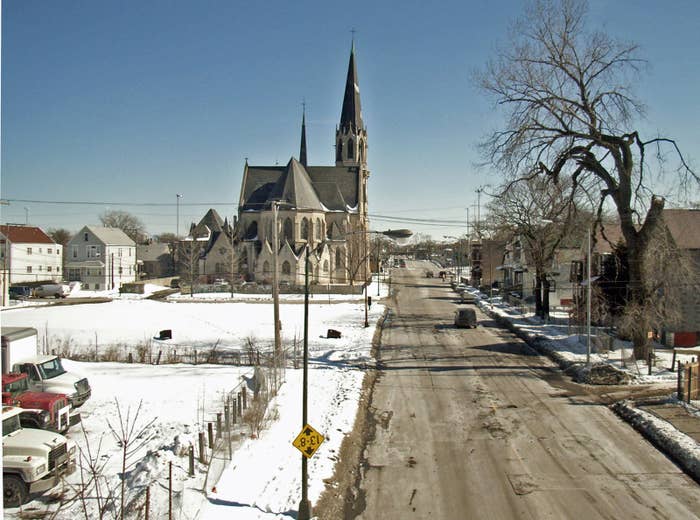
One thing the failed war on drugs has taught us is that fear and racial panic lead to bad policy. Chicago, my hometown, is now in danger becoming the public face of a new, equally disastrous era of bad thinking.
Whenever President Trump or one of his boosters invokes Chicago as a shorthand for urban violence, we hear the racialized subtext loud and clear: Black and brown people here are out of control. You can almost hear the collective exasperated sigh ripple through our neighborhoods as they say Chicago is worse than Afghanistan, or hell, or whatever their default for the worst place in the world might be.
Chicago is merely the latest city to be the poster child for urban violence, even though New Orleans, Philadelphia, Richmond, Atlanta, Baltimore, and St. Louis have higher murder rates. Painting Chicago into a corner is a dangerous exercise that evades talking about sound gun policy or improving urban centers. It does nothing to fix our gun problem, or help understand why it exists in the first place.
It’s no coincidence that singling out Chicago became so widespread during Barack Obama’s presidency. The right jumped at a chance to highlight gang-style violence in his hometown, with the same barely concealed racial animus that came with suggestions that he wasn’t a real American citizen, or that he was seeking to undermine America itself.
“It’s so tragic the way that the Trump Administration is using Chicago as a prop in the racial politics of America,” said Harold Pollack, a professor and codirector of the University of Chicago Crime Lab. Many young men in Chicago carry guns for the same reason so many Second Amendment adherents across the country stockpile their own, he said: self-defense.
But for the politicians writing off these young black and brown men, their otherness makes the idea of the right to self defense incomprehensible — even if they’re merely doing what tens of millions of American gun owners do, except in a dramatically more violent neighborhood.
“We have young men in Chicago armed up because they’re scared of each other,” Pollack said. “I’d rather be judged by twelve than carried by six,” he’s been told by young men in the criminal justice system — they’d rather face a jury and prison than be carried to their grave.
Gun violence isn’t necessarily linked to gang violence. The black gang structure in particular broke down when leaders were locked up in the late 1980s and 1990s. Top-heavy lockups led to fragmentation, and much of today’s gunplay is interpersonal — young men who know each other.

Here is a primer on what’s going on in my hometown. Yes, it has the highest number of murders of any city in the US — most notably, more than New York City and Los Angeles, the only two American cities bigger than Chicago. But it does not have more murders per capita. Last year ended with 764 murders, a huge spike from 495 the previous year. In the early 1990s, murders peaked at more than 900 and then declined, mirroring national trends of declines in violent crime. Not that long ago, the city experienced numbers in the 400 range.
All of these numbers are too high. But understanding murders in Chicago requires not only compassion but an awareness of crime trends, neighborhood dynamics, and race — and the devastation that gun violence brings to families, victims, shooters, and society.
The violence is concentrated in five out of 77 Chicago neighborhoods. These are segregated black neighborhoods that suffered through the racially discriminatory housing laws of the 20th century — laws whose effects are still felt today in the form of foreclosure violence, unemployment, poverty, and disinvestment.
Segregation is about inequality, and our city is shaped and defined by these invisible and visible forces, which affect housing values and economic development — or the lack of it. While downtown flourishes, many black neighborhoods languish. Gun violence is merely a symptom of larger forces of inequity.
There's a misperception that the city is even more violent than it actually is, and as a result, we are having the wrong conversations about solutions. The communities that suffer the most need resources and support — we cannot simply police our way out of gun violence. Even though Chicago and Illinois have gun laws many regard as tough, it’s trivially easy to buy guns in nearby states and drive them into the city, meaning illegal weapons are easy to obtain.
Instead of understanding these problems and thinking about how to solve them, people panic, and declare the city a war zone. That’s the wrong metaphor — and it's wrong in the same way as the similarly racialized and equally disastrous war on drugs. That war also fueled violence, as draconian laws and discriminatory enforcement led to record levels of mass incarceration. Men emerged from prison more troubled, and more likely to find trouble, than when they entered.
The drug war quickly became a war on disadvantaged people of color. If Chicago is the war zone that President Trump insists it is, who is the enemy?
Natalie Y. Moore is a reporter at WBEZ Chicago and author of The South Side: A Portrait of Chicago and American Segregation.
